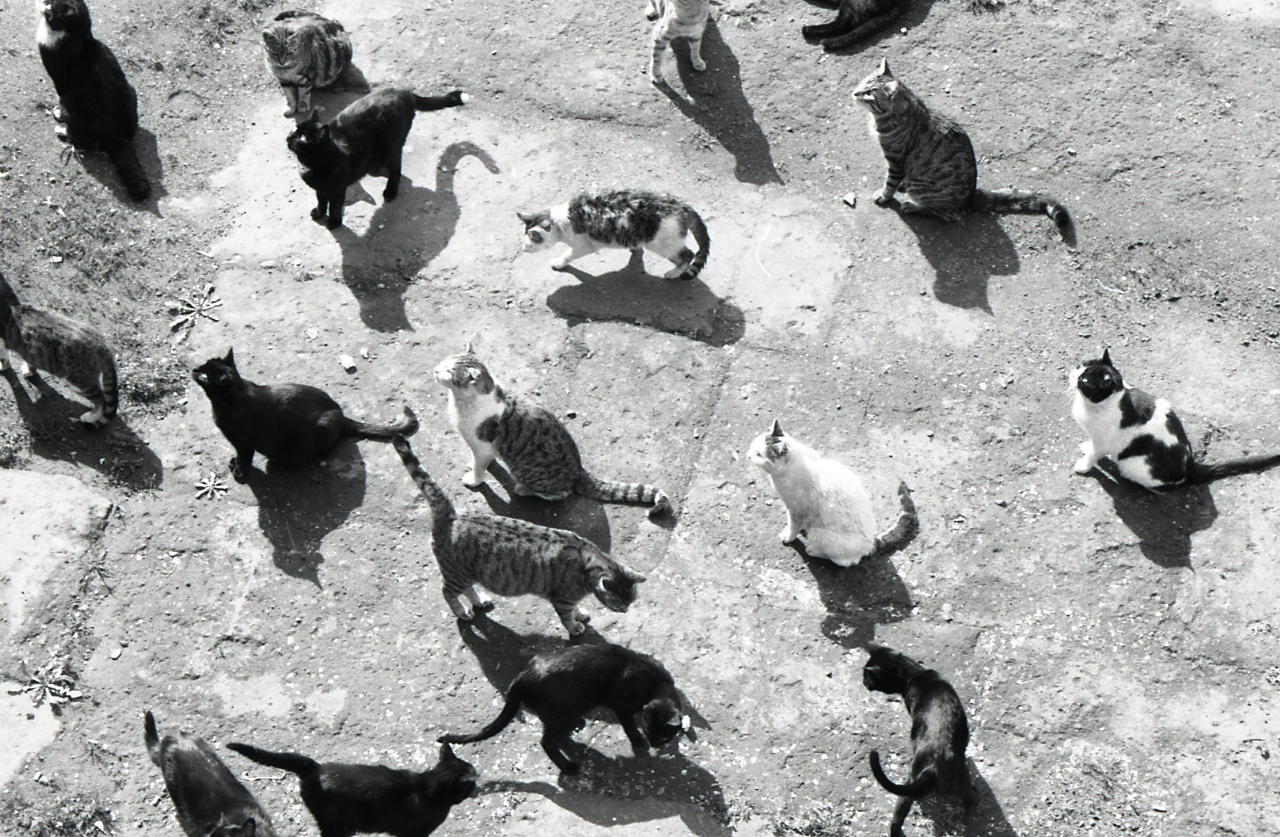
Eating away at the problem
Feral Cats— Eating away at the problem
By James Plummer
Soon that arduous decision of just what roast to buy from the local supermarket’s deep-freeze may become a little more complicated. Will it be the lamb, turkey, a duck, or that new one, the feral …. cat?
With the range of exotic gourmet meats seemingly expanding by the day, one flamboyant South Australian environmentalist believes the feral cat may soon become a delicacy for that many of us will happily pay extra to eat.
That day is not far away according to native wildlife campaigner Dr John Wamsley, and the sooner the better as far as he is concerned. A long time feral cat hater, Wamsley believes the best way to control the highly destructive pest is to create a demand for it as a delicacy meat and then eat them out of existence.
Feral cats – domestic moggies that have gone wild – have long been known to cause enormous damage to entire populations of native Australian animals such as birds, lizards and even small mammals including wallabies.
Wamsley believes governments and bureaucrats cannot be trusted to properly preserve rare Australian ecosystems and their animal species. So, through an umbrella investment company called Earth Sanctuaries Limited he runs a series of privately funded conservation parks in a number of remote, inland areas of Australia. The most famous of these parks is ‘Warrawong’ located in bushland about 30 minutes drive from the centre of Adelaide.
Wamsley hates feral cats with a passion and has devoted much of his life to eradicating them. Adept at playing the media game, he has over the years waged a number of well-publicised ‘events’ to elicit public support. He often wears a beautiful coat and hat made entirely from cat skins to public events – all of the skins he claims have come from feral cats unlucky enough to be caught on his properties.
“On trips into the bush we hardly see rabbits or foxes anymore, but the place is teeming with feral cats,” says Wamsley. “Some of them are so big, they would weigh well over 20 kilos and could probably bring down a horse if they were hungry enough.”
“The impact of such beasts, and in such numbers is taking a terrible toll on wildlife; just how much though is not known for sure because nobody is officially documenting the damage they do,” he adds.
Claiming to have eaten many a tasty feral cat, Wamsley believes their best bit is the rump, although a good stew can be made from the tail. “Pussy tail stew is one of my favourite dishes,” he says. “The meat is very tasty, with a distinct game flavour, not as strong as goanna (a reptile) but stronger than possum.”
Possum from Tasmania is now one of the new gourmet meats that is being exported into Asia. “How can you go through life wanting to have experiences and yet not experience good food like goanna and possum and feral cat – I’m surprised more people aren’t eating them already,” Walmsley suggests.
Whilst many may agree with Wamsley’s warning, particularly in peri-urban areas that fringe patches of native vegetation and national parks in Australia, few are willing to endorse or participate in his preferred control method. Mike Cartwright, chief executive of the Dog and Cat Management Board of South Australia, says, “Cats have a valuable place in contemporary society, if they are managed well. I prefer to rely on the local legislative approach, which empowers local governments to control the numbers, curfew times and registration requirements of cats in their regions, ” he says. It’s just about to be reviewed again and he is expecting Wamsley to be a key contributor.
One of the first councils to introduce curbs on cats in Australia, and still one of the few that has, is the City of Playford in Adelaide’s northern suburbs. Whilst a pioneer in feral cat control, the city has only adopted some of the measures available to it fearing some public backlash. Eddie Bergamin, Playford’s manager of dog and cat control says “the number of cats is limited to two per premise and owners are expected to keep their cats on their properties at all times.”
“We also suggest, but do not force owners to have their cats identified in some way, either by collar and tag or as is becoming more common – an inserted microchip, ” he says.
“We are not proactive in locating straying or feral cats,” Bergamin admits. “We act only when a complaint is made.” The council then hires out cat traps, expecting the complainant to capture the stray first, and hand it over to them.
“If a stray cat cannot be identified, or is not claimed within a day, it is usually destroyed, but if a stray cat can be identified it is returned to its owners – if they are willing to pay the A$50 fine.” Bergamin says. “Last year only five cats were claimed; 110 were put down.”
Environmentalists like Wamsley complain that this strategy may work partially for urban and peri-urban areas, but is rarely effective in rural and outback regions which are far away from council officers, vets, lobbyists and effective management plans. “Few rural councils have yet come to grips with the issue and none have the resources to be proactive with a pest that is way down on the list of things to control,” says Wamsley.
Meanwhile, Wamsley reckons he will stick to his strategy of eating away at the problem made all the more easier with a drop of rough red wine for lubrication. He has even developed several recipes for campfire cooked damper and pussy tail stew. They have yet to make the best seller list.
James Plummer was a postgraduate Journalism student at the University of Technology, Sydney.
Originally Filed on: 4th June 1999


